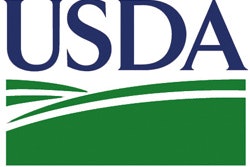 The ability to safely move large, heavy loads is an integral part of industrial manufacturing. When these loads cannot be moved manually, hoists and lifts can be utilized to transfer materials to a new location. When using these tools, there are significant safety issues to be considered, for the operator, the device, and nearby workers. Industrial Maintenance & Plant Operation, Chem.Info’s sister publication, sat down with three industry experts to discuss key safety and training issues, and to see what’s new in lifting technology.
The ability to safely move large, heavy loads is an integral part of industrial manufacturing. When these loads cannot be moved manually, hoists and lifts can be utilized to transfer materials to a new location. When using these tools, there are significant safety issues to be considered, for the operator, the device, and nearby workers. Industrial Maintenance & Plant Operation, Chem.Info’s sister publication, sat down with three industry experts to discuss key safety and training issues, and to see what’s new in lifting technology.
Tim Golling has 42 years of experience with Jergens Inc., which is comprised of three distinct units: workholding solutions, lifting, and specialty fasteners. He specializes in lifting and rigging below-the-hook hardware.
Q: What are the key elements to hoist and lift safety?
Golling: Companies must establish, document, and strictly adhere to a preventive maintenance program. The safety department, supervisors, and operators all share responsibility for the effective implementation of a preventive maintenance program. Next is an annual or semi-annual inspection of all lifting-related equipment, including cranes, chains, slings, and all below-the-hook hardware. Finally, strict enforcement of written procedures and proper use of all lifting equipment—as the old saying goes, “Someone loses a hand, everybody gets religion.”
Q: How focused is the average industrial manufacturer on hoist and lift safety?
Golling: I believe that most manufacturers do believe in—and attempt to practice—good safety practices. Safety glasses, face protection, gloves, hardhats, and protective clothing are the norm, and considerable effort is typically made with regards to employee protection. When it comes to lifting and handling heavy objects, however, my sense is that the there is a lesser degree of education and implementation concerning safety practices. Top management and safety/HR employees understand the need for lifting safety, but the person who is actually making the lift often may not have the training, knowledge, or proper equipment to make the lift safely. Ongoing education is absolutely mandatory.
Q: Despite the number of regulations and guidelines that apply to lifting, incidents continue to occur. What are some safety practices you would recommend to an industrial manufacturer? Where do most manufacturers go wrong in their approach to safe practices?
Golling: Although it may take an incident to bring things to light, we find that many manufacturers have no idea as to who the manufacturer/supplier is of the hardware, chain, and web slings they use. Additionally, many don’t keep a record of the date these items were put into service. Proper marking of the hardware and record-keeping may save many hours of research should an incident occur. The user needs to know who he or she should contact in the event of a problem.
We understand that every end user is trying to get the best pricing they can on all of their purchased hardware. When it comes to lifting-related items, however, you truly do get what you pay for. My advice to manufacturers is never to skimp on quality and service because the cheapest isn’t always the best.
Q: What new technologies have advanced hoist and lift safety in recent years?
Golling: New products come on the market on a regular basis, and manufacturers need to make a concerted effort to become aware of those devices.
Probably one of the most valuable technologies that has emerged in recent years is RFID (Radio Frequency Identification), which uses a chip or small disc containing information on a given product. A simple chip scan reveals the date of manufacture, initial inspections, certifications, etc., along with an ongoing history of inspections, replacement parts, and rebuilds. Many manufacturers include this technology or offer it as an option with their products. Although RFID is still in its infancy, the concept has caught on as a universal method of tracking the “cradle to grave” history of a given product.
Q: Any other tips for manufacturers working with hoist and lift equipment?
Golling: Some keywords I would suggest manufacturers keep in mind include:
- Ongoing education
- Regular inspections
- New technologies
- Mandatory safety training sessions
Please tune into the Chemical Equipment Daily for part two of this two-part series.























